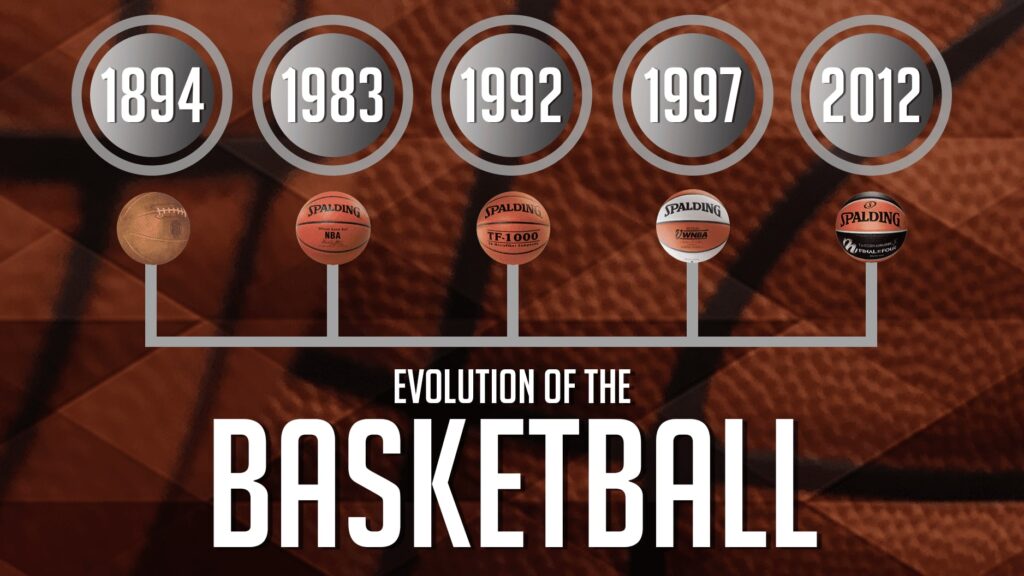Basketball, invented by James Naismith, originated in the US in the late 19th century as an indoor sport for students to play during the winter months. Since its creation, basketball has changed drastically, from the introduction of the dribble and the shot clock to the emergence of the NBA. The game has also become more popular worldwide, with international broadcasts of NBA games and inclusion in the Summer Olympics. Advancements in technology will continue to aid player development and analysis, and the future of basketball looks promising.
The History and Evolution of Basketball: From Naismith to the NBA
Basketball, one of the most popular sports worldwide, originated in the United States in the late 19th century. It was invented by James Naismith, a Canadian physical education instructor, as a means of creating a physical activity for his students to play indoors during the freezing winter months. Since then, basketball has evolved and rapidly grown to become one of the most watched and played sports globally. This article gives an in-depth look into the history and evolution of basketball, from its creation to how the sport has transformed over the years.
The Origins of Basketball and Naismith
It was in December 1891 when the first-ever basketball game was played in Springfield, Massachusetts. The game was invented by James Naismith, a Canadian physical education instructor at the International YMCA training school. Naismith was tasked with coming up with an indoor sport that would keep students active during the winter months.
Naismith aimed to create a game that was easy to understand and play, required skill, promoted teamwork, and provided an excellent workout for the body. This was the birth of basketball, which involved tossing a soccer ball into a basket nailed on the wall. The first basketball game consisted of nine players and had two baskets about ten feet high placed at either end of the court. The game ended in a score of 1-0.
Evolution of the Game
Over the years, the basic specifications and rules of the game have been refined to create a more organized and standardized version of basketball. Some significant developments include:
The Basketball Court
The court dimensions have been standardized to 50 feet by 94 feet, with a 10-foot tall basket at either end. The game is played on a hardwood surface, which is specifically designed for competitive play.
The Implementation of the Dribble
Initially, Naismith’s early rules of basketball stated that players were not allowed to dribble the ball. However, after much debate, the dribble was included in the rules, which significantly improved the flow and pace of the game. This allowed players to maintain control of the ball while running down the court without passing it.
The Shot Clock
In 1954, Syracuse Nationals owner Danny Biasone introduced the 24-second clock in response to slow and tedious playoff games. The shot clock added a new level of excitement to the game, forcing teams to shoot the ball within 24 seconds, creating faster gameplay and more scoring opportunities.
Three-Point Line
In 1979, the three-point line was introduced, marking another significant evolution in basketball. The line made it possible for players to score a 3-pointer by shooting the ball from beyond the line. This change extended the range of the game and created more scoring possibilities.
The Emergence of the NBA
The National Basketball Association (NBA) is the premier basketball league in the world, attracting the most talented basketball players globally. It was founded as the Basketball Association of America in New York City in 1946. In 1949, the league changed its name to the National Basketball Association after merging with the National Basketball League.
Since its inception, the NBA has undergone significant changes, including the introduction of new teams, expansion of the league, and formation of new divisions in 1970. Additionally, the NBA has also added a host of internationally recognized players, expanding the league’s global reach.
The Future of Basketball
Basketball has come a long way since its creation, with changes and innovations improving the game’s quality and standard. However, the future holds even more exciting developments for basketball. Advancements in technology will allow for more efficient and effective player tracking and analysis, as well as skill development programs.
Furthermore, the popularity of basketball is only set to increase, with NBA games being broadcast across the globe and attracting an international following. The inclusion of basketball in the Summer Olympics has also contributed to the game’s global popularity.
Conclusion
Basketball has come a long way since its creation by Naismith in the late 19th century. The game has evolved from its initial form to be one of the most exciting and entertaining sports in the world, and it is still evolving. Changes such as the shot clock, three-point line, and inclusion of a dribble have all contributed to the improvement of the game’s quality and standard. With advancements in technology and increased global popularity, the future of basketball is promising and exciting.
